Handcuff are restraint equipment to restrain a suspect from escaping or transport arrestees safely. Generally, handcuffs consist of two parts that close around the wrists and are connected together by a chain, hinge, or rigid bar. Each cuff has a rotating arm which holds the closed cuff on someone’s wrist and uses a ratchet mechanism to lock it into place. The handcuffs modern police officers use today are designed by Peerless at the start of the 20th century. Although the lock on handcuffs have changed the design today, they still resemble the original design at that time.
History of Police Handcuffs
As early as in 1912, police handcuffs became more like the style in use today. George Carney invented the first swing cuffs in the same year, which was proved to be revolutionary later since it enables law enforcement officers to quickly secure the cuffs in one hand. Then, it made the position of behind the back standard since mid-1960s.
What Are Police Handcuffs Made of?
Most modern handcuffs are made of steel with an adjustable wrist size and an automatic locking device. Today, there are also disposable handcuffs made of nylon, which is lightweight and easily portable for law enforcement officers to carry several sets at one time.
Are Police Handcuff Keys Universal?
Modern handcuffs used in the UK, USA, and Canada use a universal key, making it easier to transport prisoners from one place to another without the risk of losing a suitable key. Usually, the universal key comes with each pair of handcuffs. Its design is simple: a barrel shape with a single tooth at one end and a smaller pin at the other end. However, some handcuff makers may produce cuffs that require a unique key based on different standards.
There are different types of police handcuffs used around the world and the models vary from country to country.
Chain Handcuffs
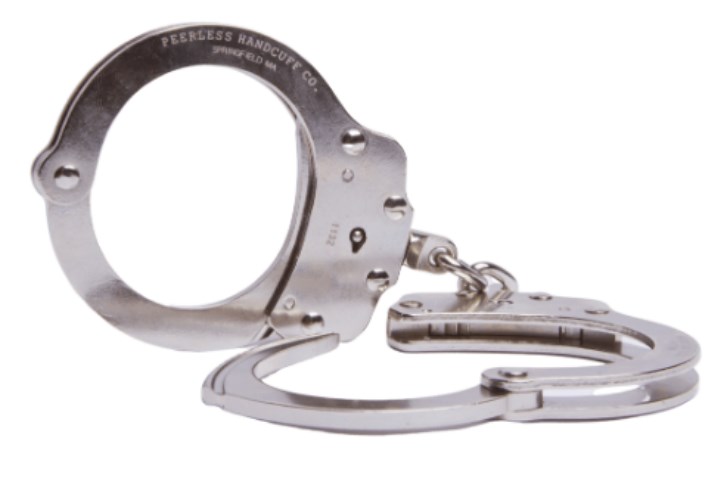
Chain handcuffs are composed of two chain-connected parts that close around the wrists. Sometimes, law enforcement officers may arrest someone with a wide waistline or muscular physique and hard to close the wrists together, chain handcuffs make it more flexible and mobile to use than hinged handcuffs. Although these handcuffs are not as sturdy as hinged handcuffs, only a few occurrences happened in the past where someone on stimulants broke the chain cuffs.
Chain handcuffs are very convenient to use. Law enforcement officers can lock an arrestee with just one hand and fold it easily into a handcuff pouch.
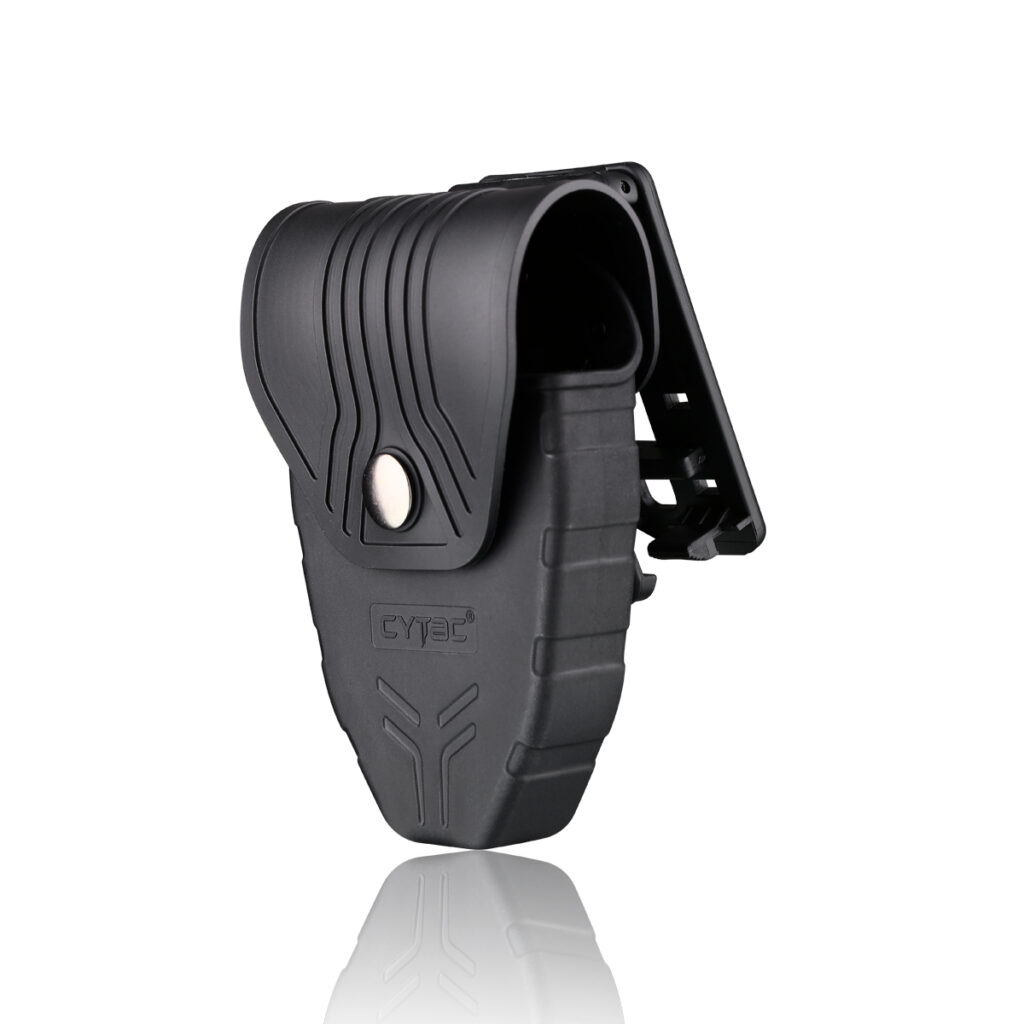
Cytac handcuff pouch provides two options – one with lid option and another without. And the handcuff pouch with lid can be removable to meet different user preferences. Also, it is designed with three optional specifications – 57.5mm inner Dia, 60mm inner Dia, and S&W Standard – to fit US standard chain handcuffs or hinged handcuffs. Besides, it is widely compatible with 10 carrying platforms with tooth gear: Paddle, belt loop, MOLLE, low ride belt loop, drop leg platform, shoulder harness, etc. If you want to know more about the details and customization, feel free to consult our sales team.
Hinged Handcuffs
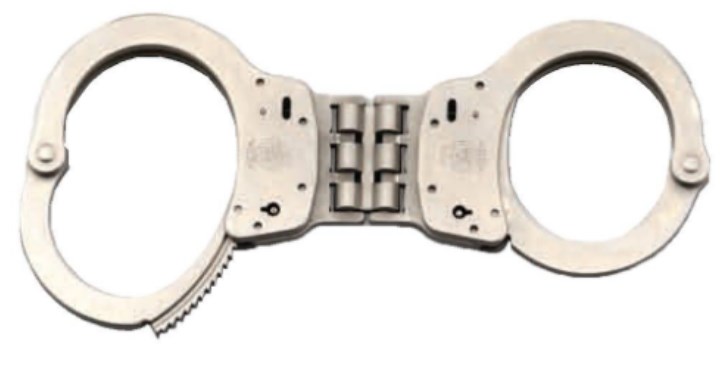
Different from chain cuffs, the two parts of hinged handcuffs are connected by a hinge at a close proximity. Generally, hinged handcuffs are considered more secure and stronger than chain handcuffs because the hinges allow lesser range of movement, reducing the mobility of arrestees.
What’s more, hinged handcuffs are also suitable for combative and intoxicated occasions. For example, if you have one handcuff with a suspect trying to escape or fight with you, hinged handcuffs makes it easier for you to use defensive tactics like torquing the handcuff at an angle to make the suspect surrender and cooperate. Compared with chain handcuffs, hinged cuffs make it almost impossible for criminals to escape or break. And, they can be folded in half and put in the handcuff pouch on your tactical belt.
Rigid/ Bar Handcuffs
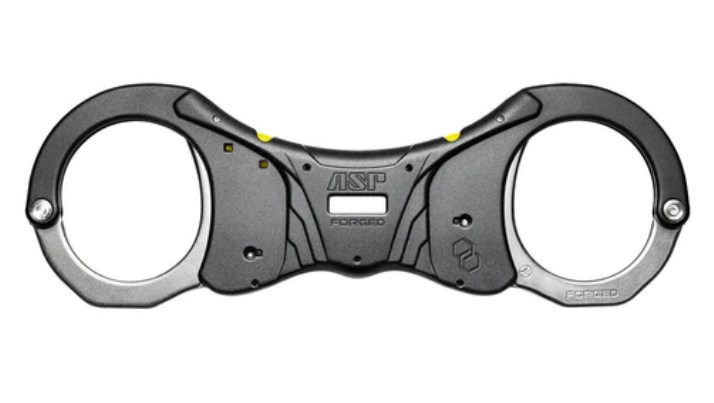
Rigid handcuffs feature a solid metal bar which connects two parts of cuffs together. Compared with the previous two handcuffs, rigid handcuffs are the safest and strongest since they provide no range of movement and prevent arrrestees from breaking the cuffs but are much more bulkier and cumbersome to carry than other handcuffs. In real life, rigid handcuffs are only used when strictly necessary to control the prisoner during transport or in a court.
Plastic Handcuffs/ Disposable Restraints
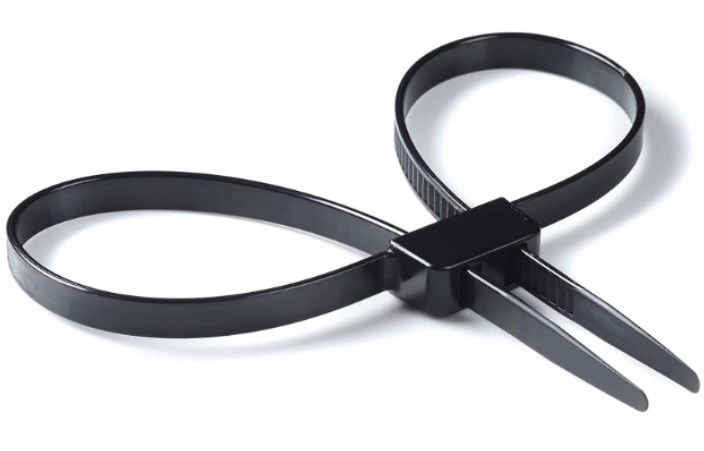
As the name shows, plastic handcuffs (wrist ties, flex-cuffs, zipcuffs, or plasticuffs) are made of plastics, which are lightweight and convenient to carry in large quantities by law enforcement officers. Thus, they are reliable, economical, and easy to use during riots, protests, or mass arrests. However, since a pair of scissors can easily unlock the cuffs, they are not suitable for using on high-risk prisoners.
Transport Handcuffs
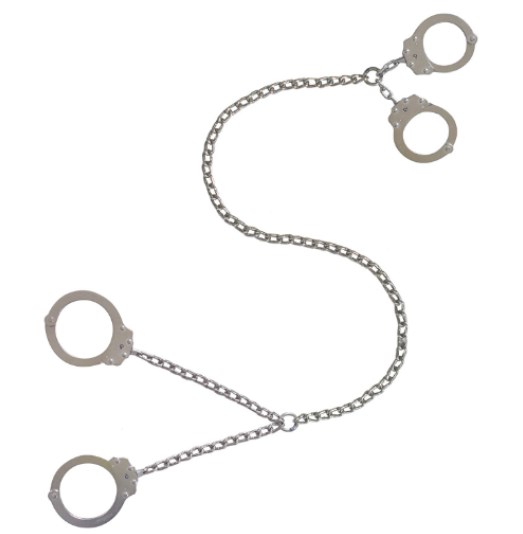
Based on security considerations, transport handcuffs are designed to ensure the safety of detainees during transport. Although transport handcuffs differ from one law enforcement agency to another, many may choose to use wrist chains and leg irons to ensure the safe escort of prisoners en route. Also, high-security detainees may also be fitted with a black box over the handcuff to protect the keyhole from tampering.
Thumbcuffs
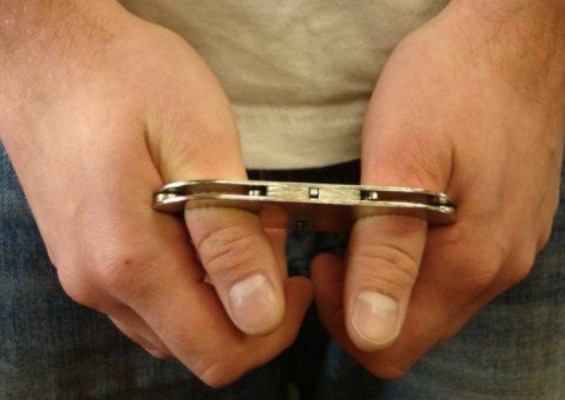
In comparison to traditional handcuffs, thumbcuffs are rarely used and not commonly seen. As a supplement to restrain the subject, thumbcuffs hinder arrestee’s thumbs rather than wrists. Although they are inexpensive, easy to hide, and mobile, law enforcement officers never use them on someone actively resisting arrest or in life-threatening situation.
Bonus: Leg cuffs
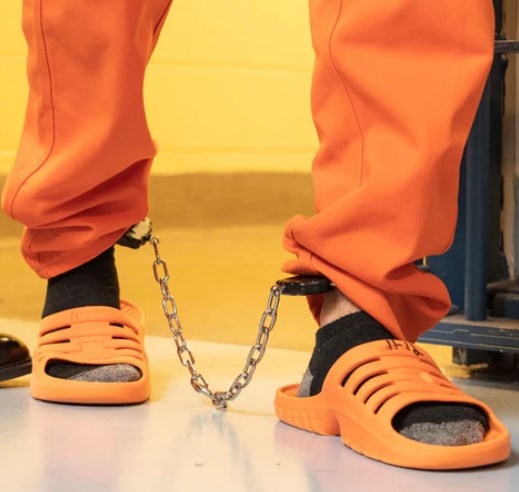
Except for handcuffs, there are also leg cuffs which fit around a prisoner’s ankles. Various leg cuffs exists and some resemble chain handcuffs. The difference is that the chains of standard leg cuffs are longer than the handcuffs so that prisoners can walk with minimum pressure to Achilles’ tendon.
When a suspect shows aggressiveness, leg shackles and handcuffs can be used together to reduce the threat to the life safety of law enforcement officers, say, transport handcuffs. Moreover, leg cuffs are also used when escorting prisoners from one place to another to avoid them attempting to escape. When restrained in standard leg shackles, the arrestees are able to step forward normally but cannot run away.
Conclusion
The biggest difference today between handcuffs is the way the two parts are connected. With different sizes and usage, these handcuffs give law enforcement officers more control over the arrestees on different occasions. Although the changed police handcuffs still have basically the same design with the handcuffs created by Peerless about 100 years ago, who knows what they will change in the next century?
